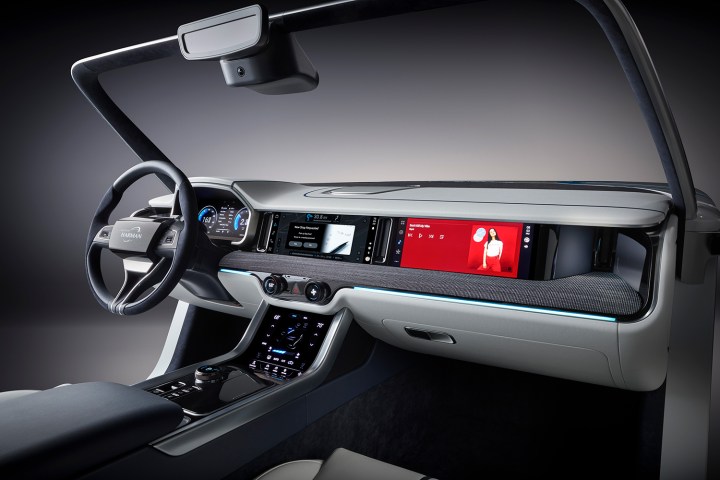
When sitting in a car, today’s drivers and their passengers expect more than just basic information from the car’s instruments to be available. They also expect user-friendly instrument clusters and infotainment systems for navigation and passenger entertainment, but many in-car systems are siloed and difficult to use. An in-vehicle experience showcased by Samsung subsidiary Harman at CES 2019 aims to change that by connecting car systems to the rest of our lives.
A highly connected vehicle experience involves both information and entertainment, displaying data like speed, gas level, and mileage in an attractive and easy-to-read way and offering extra features like turn-by-turn navigation, a multimedia player, and feature menus. The aim for Harman’s system is to seamlessly integrate the in-car experience with the user’s smartphone so that they can use favorite personal assistant apps like Google, Alexa, and Samsung’s Bixby in their vehicles just as they do in their homes.
There is also a facial-recognition feature which monitors the driver to capture biometric data and offered augmented reality experiences like the E-Mirror surround view and contextual navigation system and cloud-stored profiles. This could be ideal for a car shared between spouses: You would just have to sit in the driver’s seat and the car would recognize your face and automatically adjust the car’s settings to your personal profile.

When buying a new car from the factory, a vehicle can be fitted with Harman’s Premium Digital Cockpit and Compute Platform which includes modular hardware and software in a package that integrates data from the vehicle cluster, infotainment, and safety features. The hardware used includes QLED and OLED displays for a crisp and vibrant image that is visible in both day and night driving conditions.
Other features include voice commands which have special signal processing to personalize the environment so that communication from any occupants should be smoother and easier, alleviating the frustration of trying to get Alexa to play a particular song while kids are being noisy in the back of the car. The acoustic updates have been applied to phone calls, too, with a far-end noise cancellation feature that should make phone calls and voice commands clearer and easier to hear.



